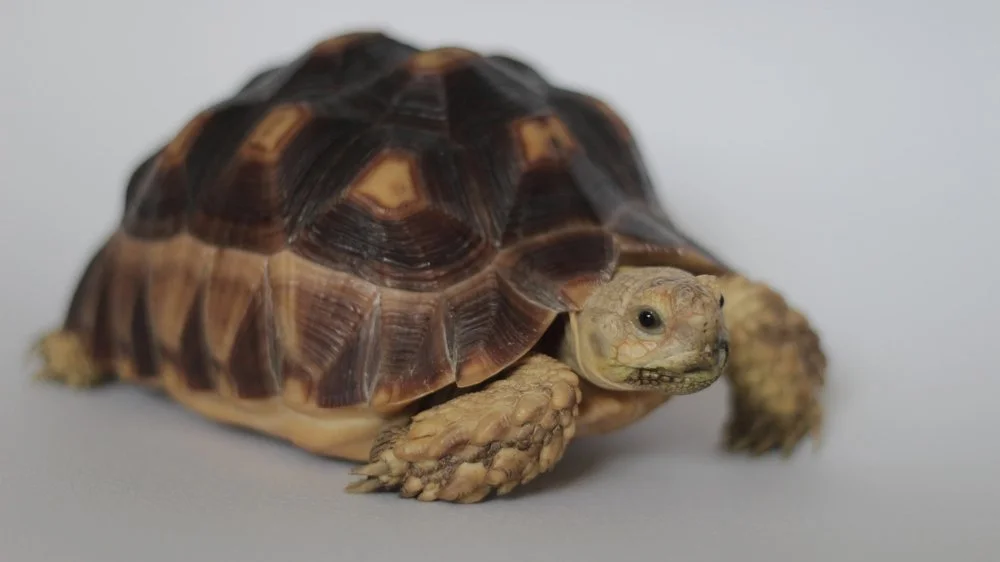Sulcata Tortoise Care
Sulcatas are tortoises native to the semi-arid grasslands of Sub-Saharan Africa. They are the 3rd largest tortoise species in the world and can live several decades in captivity.
Diet
Grasses & Hays
AZ Cottontop
Bermuda
Blue Grama
Buffalo
Curly Mesquite
Deer
Muhly
Orchard
Timothy
Produce & Other Plant Items
Bok Choy
Collard Greens
Kale
Mulberry Leaves
Mustard Greens
Pumpkin Leaves
Spinach
Turnip Greens
Zucchini/Squash Leaves
A diet consisting of primarily grasses/grass hays is nutritionally complete. Dark green, leafy vegetables are acceptable. Vitamin supplements are unnecessary, and in fact are often harmful. Do not feed any type of lettuce, fruit, or protein rich (including animal proteins) food as these can lead to nutritional deficiencies. ZooMed Grassland Tortoise food is acceptable for juveniles.
Size
Sulcatas are the largest mainland tortoise in the world. Adult males can reach up to 200 pounds and females can weigh 125 pounds. Shell length can reach up to 36 inches. Juveniles grow quickly, easily doubling in size each of their first few years and can have an appetite to match. Their large size must be taken into consideration when preparing an enclosure.
Housing
In order to meet their UV light requirements and maintain normal light cycles, Sulcatas are best housed outdoors in a large enclosure. The concrete or block walls of the enclosure should be sunk down into the ground at least 2 feet as these tortoises are known to dig deep burrows (almost 3 feet below ground and 10 feet long) to escape high temperatures and reach some humidity. Chain link or wooden fences are not recommended because of the Sulcatas’ strength and burrowing ability.
It is important to also provide an insulated shelter for protection from excessive heat or cold. Sulcatas do not hibernate during the winter so it is important to provide adequate housing or bring them inside for the cold months. If a Sulcata gets too cold then it cannot digest food and the food already in the intestinal tract will start to decompose. A winter shelter should be large enough for the tortoise to move around, well insulated and heated so the tortoise’s ambient temperature does not drop below 60°. An outdoor shelter should be large enough for the tortoise to turn around in but have an opening to the outside just a little larger than the diameter of the shell to mimic a burrow. Sheds and doghouses can be modified to fit these requirements.
Water
Sulcatas are adapted to live in the arid climates of Africa where water sources are few and far between. They are able to obtain most of their hydration through the foods they eat but still need access to fresh clean water. Small Sulcatas can be soaked on a weekly basis for 30 minutes in a tub of shallow, lukewarm water, deep enough to cover the lower part of the shell. Adult tortoises can be offered a mud wallow large enough for the tortoise to climb into and out of.


